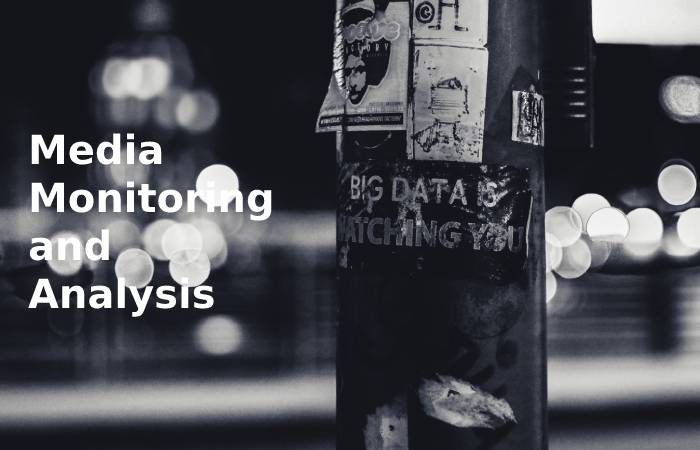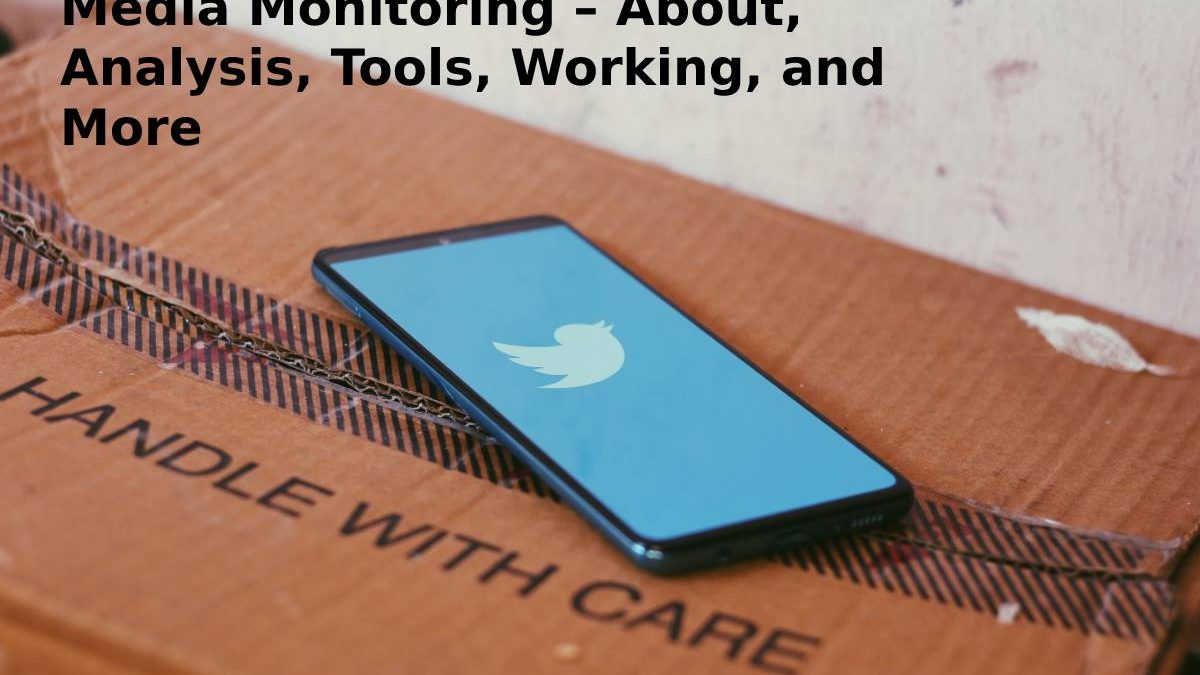Table of Contents
What is Media Monitoring?
The definition of the so-called media observation means the word media in search of information on specific topics. However, information found in the press may have commercial, business or scientific value.
Therefore, with the growth of technology, the Internet and broader access to information, media monitoring is critical. And also, thanks to numerous media monitoring tools, this is now an automated process. Today, the Internet is an essential information carrier. It is necessary for business as much commerce is done over the Internet.
Media coverage should cover as many related sources as possible. Many media monitoring software tracks sources such as radio, television, print media, and the Internet, including social media.
Media Monitoring and Analysis

In business, the relevant data collected by a media monitoring platform can provide valuable insight into the public’s perception of your brand, company, PR and marketing campaign, products, services or your competitors.
Media monitoring service is broadly used in public relations to keep track of press releases and keep up to date with all data concerning your client. They are tracking and analyzing media coverage challenges many PR professionals face daily.
With a combination of observation and analysis, you can address numerous business areas, including:
- Brand monitoring
- customer care
- customer feedback
- Public relations, including cultivating media coverage and media relations
- crisis management
- market research
- Analysis of PR and marketing campaigns
- Hashtag Analytics
- competition research
What Monitoring Tools are there?
For the users watching for media monitoring software, we have carefully selected the ten best media monitoring tools that will help you succeed!
- fire24
- Brandwatch
- Google Alerts
- Talkwalker
- SEMrush
- Sprout Social
- Prowly
- tweet deck
- keyhole
- reputationology
How does Media Monitoring Work?
Now you know what media monitoring is and how it can affect your bottom line, but how does it work?
Monitoring online conversations about your business is a breeze. Dedicated media monitoring tools capture every mention in real-time. The whole process can break down into simple steps:
- Choose the keywords you want to monitor. Media monitoring services scour the web looking for any mentions that contain your keyword.
- Depending on the goal of the media monitoring, you choose the analysis metric that you want to track closely. Many companies follow the digital interaction of their content, competitors or data about their industry.
- Distribute the insights you have gained from media monitoring in your company. Whether you’re creating a customizable media watch report or a custom Slack integration, make sure all parties involved get the information they need.
The achievement of your media monitoring depends on setting up your project correctly and knowing how to react to the insights you have gathered.
Step 1. Decide what you want to monitor
First, you need to know what you want to achieve using media monitoring platforms. To start, ask yourself what type of data will best meet your needs. Maybe it’s about your brand reputation, the results of your competitors’ marketing campaigns, or trends in your industry?
You should continuously monitor your brand. Monitoring your business provides two types of information:
- You will know what, where and who is talking about your business and how and what changes over time. That allows you to evaluate the performance of your marketing campaigns and identify your most prominent advocates and opponents. You will be able to mitigate the consequences of poor public relations.
- Over time, it results will help you establish benchmarks. You’ll know if you’re making progress or not. By monitoring your brand or business for yourself, you’re in control of the coverage. You’ll get the business insights you need to shape the story about your company. You know how the media reports about your company.
Watch the competition
It would help if you also kept an eye on your competitors. To grow, you must be ahead of your competitors. The first step to becoming an industry leader is to know what your competitors are doing.
It gives you all the information you need in one place. You will see what your competitors are saying, what campaigns they are using, what channels, and much more. If you want to remain an industry leader, you need to know the industry inside out. The more you know, the more efficiently you can work.
Step 2. Set up a project
Media monitoring tools generally track every public mention that contains your predefined keywords. And also, the maximum of the devices covers various sources and includes social media monitoring.
It is an essential part of the media monitoring process. Therefore, you should pay attention to the keywords and choose them wisely to get the best possible data.
The keywords should be closely related to the topic you want to track. For example, if you need to track mentions of your brand, here are some keywords we recommend:
- your brand name
- Name of your product or service
- Your branded hashtag
- Topically related hashtags or phrases
- First plus last name of your CEO and other known employees
Step 3. Collect and analyze the results
And also, media monitoring tools search and analyze publicly available online content from websites and social media platforms based on those platforms’ APIs.
Amd also, the analysis part is one of the best valuable media monitoring projects. Therefore, media monitoring tools analyze the collected data and present it in an actionable form.
Which Sources are covered by Media Monitoring?
However, it used to be incomplete to print and broadcast media. And also. that changed with the advent of the Internet. However, now you need to collect every mention about your company and industry to make the most informed decisions possible. Even if they look on a platform you are not familiar with.
Where should you look for content that interests you?
- However, online cloud-based it tools cover the majority of online sources. The monitoring and number of mentions in the project rely on the media monitoring software of your choice. For example, Brand24 monitors blogs, podcasts, newsletters forums, online news sites and other publicly presented online sources.
- Print media newspapers also magazines make up a large part of it. Print media are still an essential source of information for some target groups. The good news is that most newspapers and magazines have an online edition, so you can easily keep track of them with an online media monitoring tool.
- Social media monitoring should be an integral part of your project. Many conversations about your industry or business take place on Facebook, Instagram, or Twitter. Don’t neglect other social media platforms, either! YouTube is now the second most used search engine. It is essential to appear in their search results. Here’s why social can be so important to you:
Why is Social Media Monitoring Necessary?
However, social it helps you find everything relevant to you and gives you a deeper understanding of the conversations happening about you and your brand. It’s about more than just looking for mentions, tags, comments, or shares—it’s about listening to discussions about your product and brand and taking the pulse of your industry.
And also, you can provide top-notch customer service to your customers by answering the questions they put to you. You can also positively surprise them by responding to posts they don’t tag you in, but that is about you or your industry. And also, creating experiences like this on social media sets you apart from your competitors.
And also, most social networks allow you to search for a hashtag or keyword. You can also find out what’s hot on a given day. Therefore, if you find something or someone that interests you, click to learn more.
However, you can track everything relevant to you across all the social sites you use on a single platform with a social tool. However, you can search and monitor hashtags, keep track of your timeline and page mentions, build your Twitter lists, and more.

